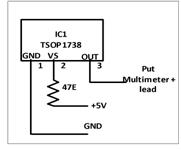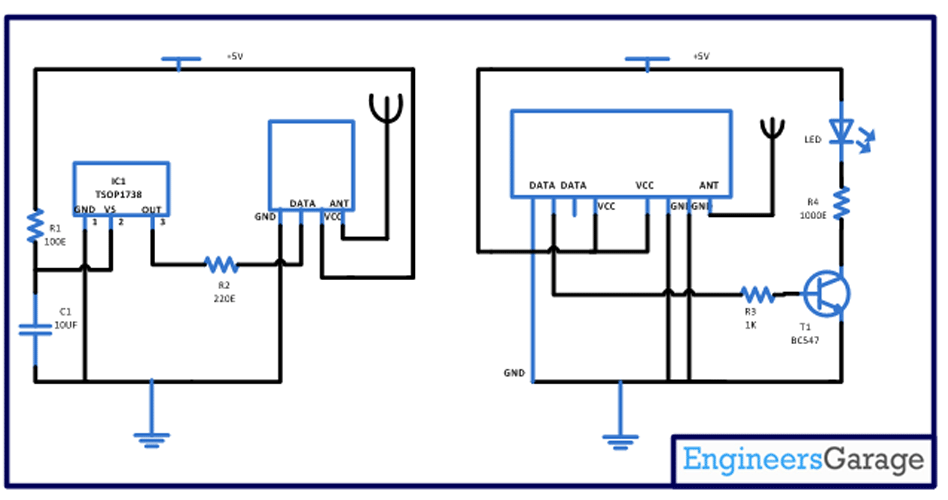Here we have presented a simple circuit using which you can convert IR signal into RF signals and at the same time transmit this to remote location and decode them using a compatible RF receiver. With help of this circuit you can increase the range of the device you are controlling up to 200 meters
[[wysiwyg_imageupload:12341:]]
Fig. 1: Prototype of IR to RF Converter Circuit on Breadboard
Here we have presented a simple circuit using which you can convert IR signal into RF signals and at the same time transmit this to remote location and decode them using a compatible RF receiver. With help of this circuit you can increase the range of the device you are controlling up to 200 meters.
We all control our devices like TV, VCR, DVD player, air-conditioners and many other electronic devices with help of remote. In this we are controlling our devices by sending and receiving coded IR signals. The mostly used code format here is RC5. The main disadvantage of this code or remote is that it can operate in small range of 5 meters approx.
Therefore, if you want to increase the range of the device to control then circuit is very useful for you. With the help of this circuit you can convert these coded signals into RF signals and decode them at receiver side. This will increase the range of the device to be controlled about 200 meters.
In this circuit we are using 433.92Mz transmitter and receiver module. We are using TSOP1738 to detect the IR signal at receiver module. The code to be detected is feed to the pin 2 that is data pin of 433.92 Mz transmitter section. The RF transmitter is an AM/ASK transmitter having power output of 16Db approx. at 5V power supply.
Now signals which are transmitted are decoded at receiver end by receiver module. For testing we can use any remote of TV, DVD player or of your AC which must work on 433.92 Mz frequency. Now press any button you will see that initially LED connected with the transistor T1 is ideal and when you press any button on remote and it will start blinking. This indicates that coded pulse train has been received.
Be careful while using the 433.92 Mz transmitter and receiver modules because different companies have different pin configuration. So before using or connecting it with the circuit refers to its datasheet carefully otherwise it will destroy your module.
And also check that TSOP you are using is also compatible with the remote you are using means they both will work on same frequency otherwise it will not work. You can check it with the help of circuit diagram below-

Fig. 2: Circuit Diagram Showing working of TSOP

Fig. 3: Pin Configration Of TSOP
Give power supply to pin 2 with the help of resistor and ground pin 1. Set your multi-meter in voltage range at 20V. Now put positive terminal of your multi-meter on pin 3 of TSOP1738 and ground the other end of multi-meter. Now whenever you press any button on remote you will see variation in multi-meter reading. If this phenomenon is happening then you can say your TSOP1738 is responding to 38 kHz frequency because most of the remote work on this frequency.
Circuit Diagrams
Project Components
Project Video
Filed Under: Electronic Projects
Filed Under: Electronic Projects



Questions related to this article?
👉Ask and discuss on EDAboard.com and Electro-Tech-Online.com forums.
Tell Us What You Think!!
You must be logged in to post a comment.